Abstract
An automated colorimetric method for determining lipase activity in canine sera was evaluated for precision, linearity and correlation to existing assay methods. The colorimetric method was a commercial reagent that used a series of enzymatic reactions based on the hydrolysis of 1,2 diglyceride by pancreatic lipase. Within-run and between-run coefficients of variation were < 6.8% and < 8.3%, respectively. Linearity was determined to be at least 1366 U/L. Canine serum lipase concentrations attained using the colorimetric method were compared to both titrimetric and dry-film methods for measuring serum lipase activity, resulting in significant (P < or = 0.05) correlation coefficients of 0.92 and 0.77, respectively. Canine serum lipase concentrations measured using the colorimetric assay on 2 different automated analyzers had a significant (P < or = 0.05) correlation coefficient of 0.92. A laboratory reference range using serum samples from 56 healthy dogs (0-561 U/L) was established. There were no significant (P < or = 0.05) differences in mean serum lipase concentrations comparing male and female dogs or comparing young dogs (< or = 3 y) to mature (4-7 y) and older (> 7 y) dogs using this assay. It was concluded that the automated colorimetric assay was a reliable indicator of canine serum lipase activity and offered several advantages, including small sample volume and short analysis time.
Full text
PDF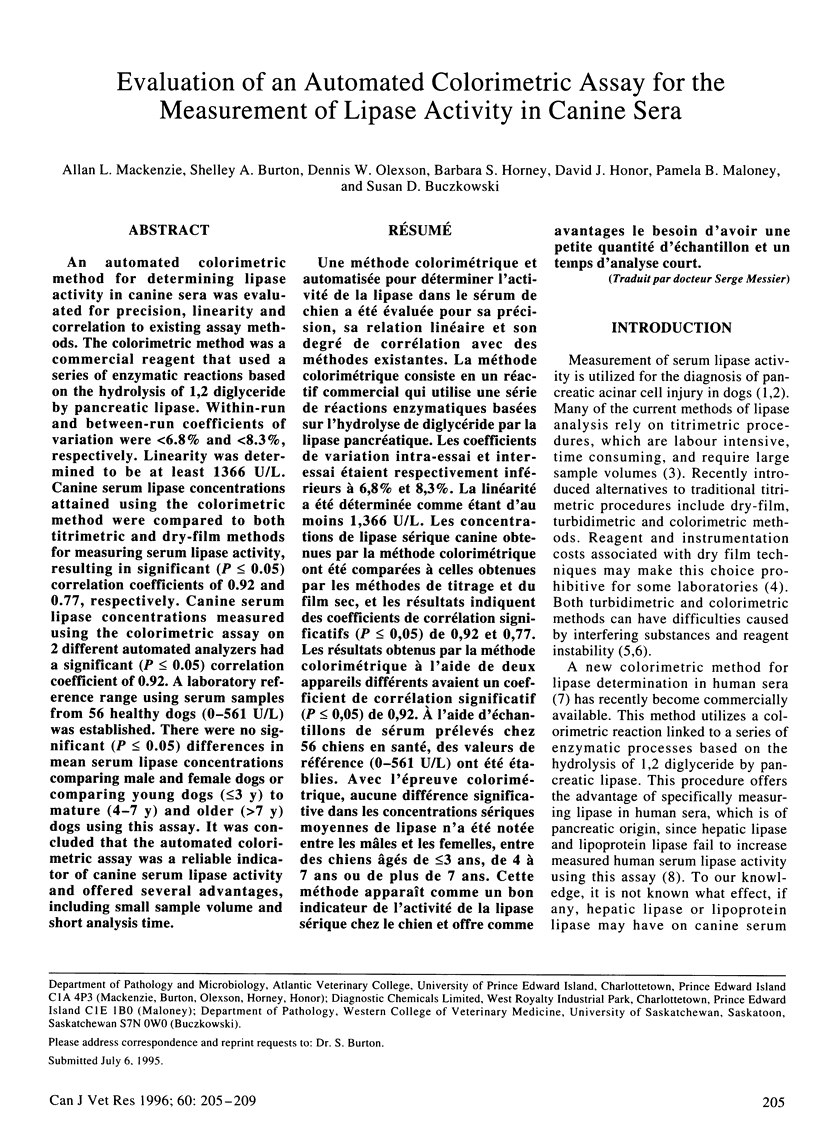
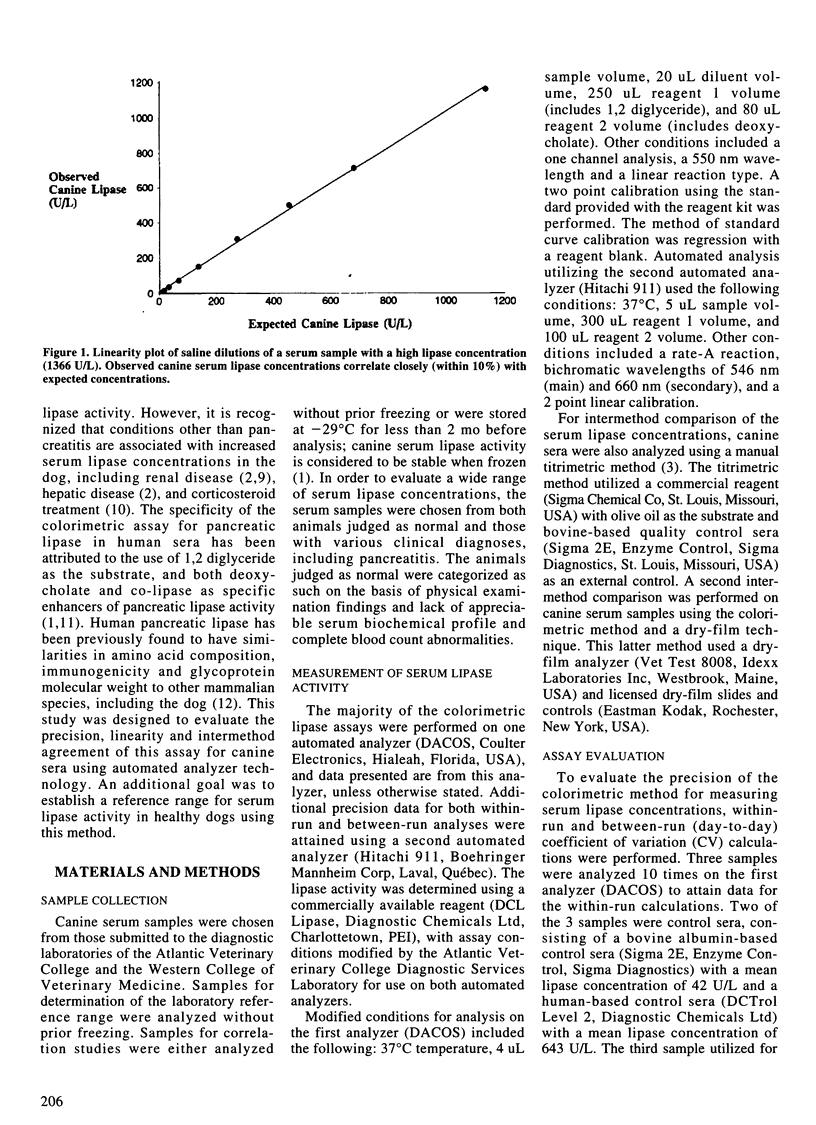
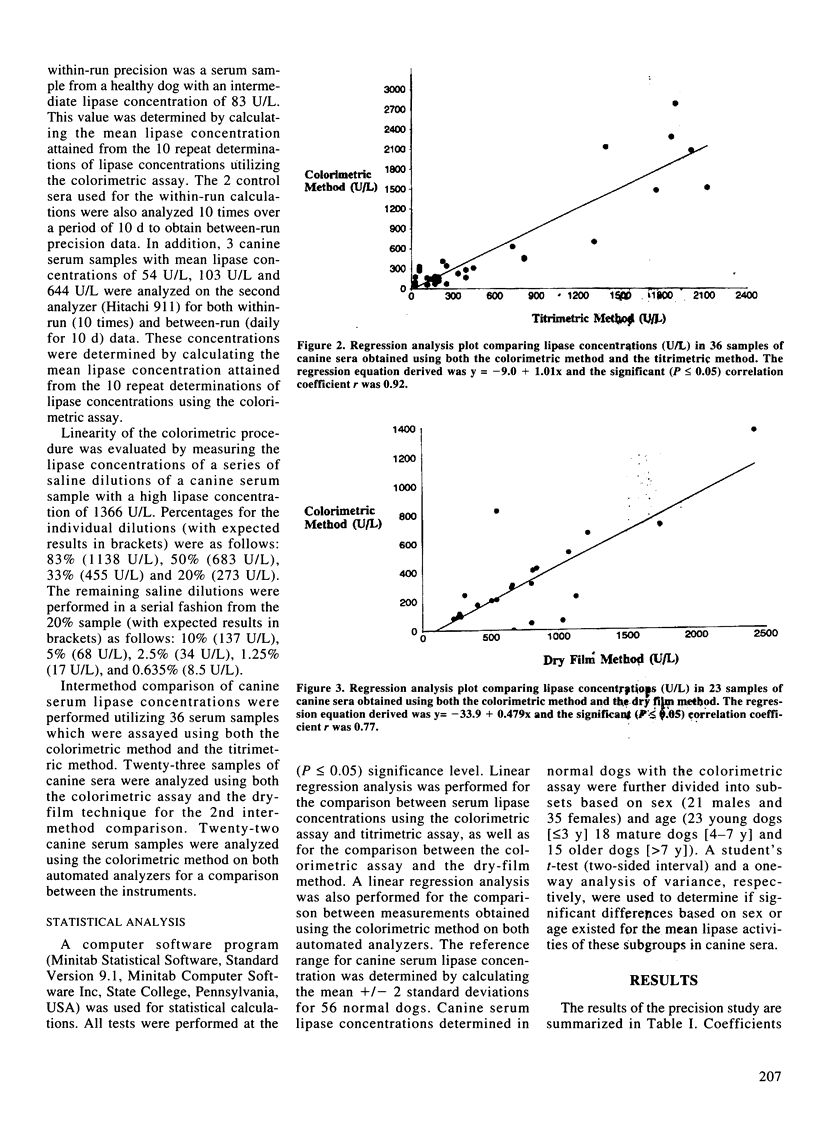
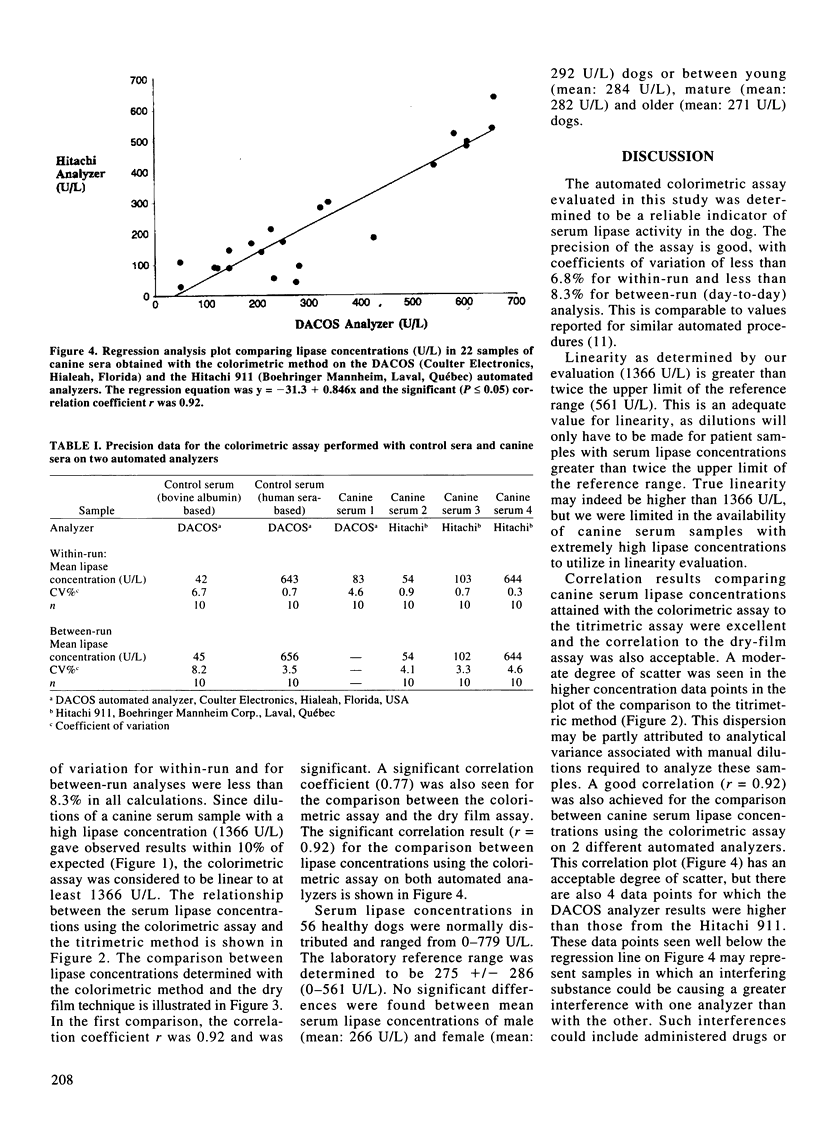
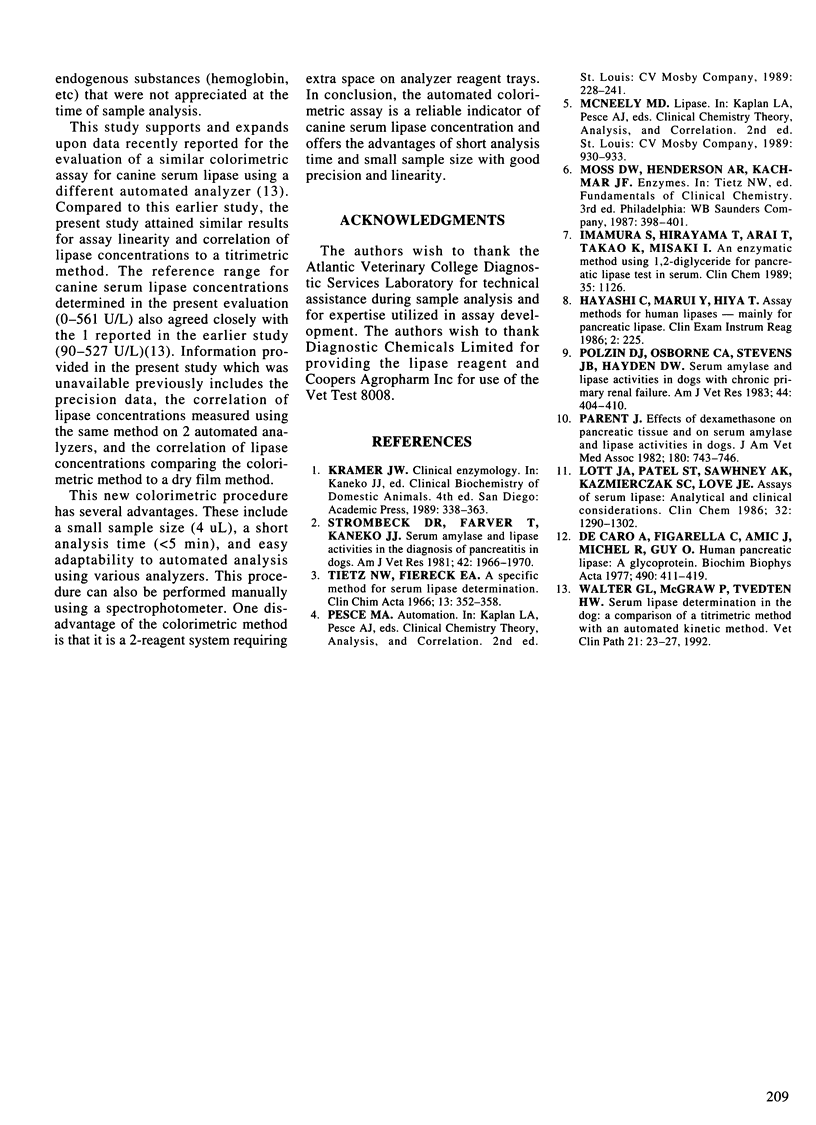
Selected References
These references are in PubMed. This may not be the complete list of references from this article.
- De Caro A., Figarella C., Amic J., Michel R., Guy O. Human pancreatic lipase: a glycoprotein. Biochim Biophys Acta. 1977 Feb 22;490(2):411–419. doi: 10.1016/0005-2795(77)90016-2. [DOI] [PubMed] [Google Scholar]
- Lott J. A., Patel S. T., Sawhney A. K., Kazmierczak S. C., Love J. E., Jr Assays of serum lipase: analytical and clinical considerations. Clin Chem. 1986 Jul;32(7):1290–1302. [PubMed] [Google Scholar]
- Parent J. Effects of dexamethasone on pancreatic tissue and on serum amylase and lipase activities in dogs. J Am Vet Med Assoc. 1982 Apr 1;180(7):743–746. [PubMed] [Google Scholar]
- Polzin D. J., Osborne C. A., Stevens J. B., Hayden D. W. Serum amylase and lipase activities in dogs with chronic primary renal failure. Am J Vet Res. 1983 Mar;44(3):404–410. [PubMed] [Google Scholar]
- Strombeck D. R., Farver T., Kaneko J. J. Serum amylase and lipase activities in the diagnosis of pancreatitis in dogs. Am J Vet Res. 1981 Nov;42(11):1966–1970. [PubMed] [Google Scholar]
- Tietz N. W., Fiereck E. A. A specific method for serum lipase determination. Clin Chim Acta. 1966 Mar;13(3):352–358. doi: 10.1016/0009-8981(66)90215-4. [DOI] [PubMed] [Google Scholar]
- Walter Gail L., McGraw Pamela, Tvedten Harold W. Serum lipase determination in the dog: a comparison of a titrimetric method with an automated kinetic method. Vet Clin Pathol. 1992;21(1):23–27. doi: 10.1111/j.1939-165x.1992.tb00578.x. [DOI] [PubMed] [Google Scholar]


